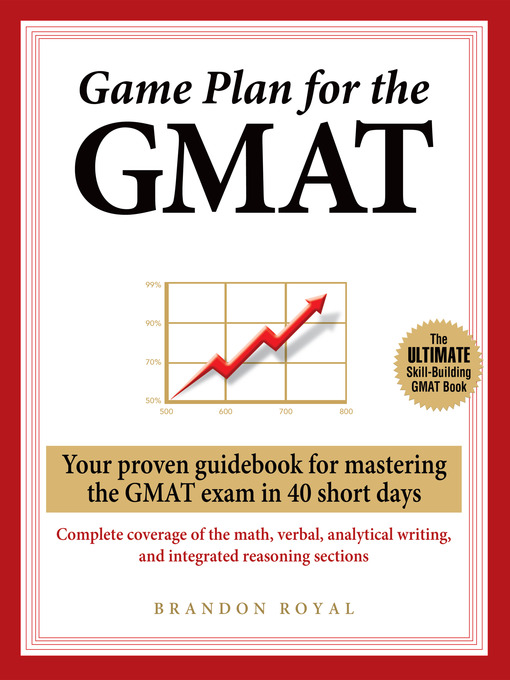A Treasure Trove of Tools and Techniques to Help You Conquer the GMAT Exam
Game Plan for the GMAT is based on a simple but powerful observation: Test-takers who score high on the GMAT exam do so primarily by understanding how to solve a finite number of the most important kinds of problems that appear on the GMAT. What are these important kinds of problems? The answer to this question is the basis of this book. This manual provides in-depth analysis of over 200 all-star problems that are key to mastering the seven major GMAT problem types including Problem Solving, Data Sufficiency, Sentence Correction, Critical Reasoning, Reading Comprehension, Analytical Writing, and Integrated Reasoning. Apart from providing readers with answers and full explanations, a special feature of this book is that each problem is categorized by type ("classification"), rated by difficulty level ("chili rating"), and supplemented with a problem-solving strategy ("snapshot").
Whether you're a candidate already enrolled in a test-prep course or are undertaking self-study, this book will serve as a rigorous skill-building study guide to help you conquer the math, verbal, analytical writing, and integrated reasoning sections of the exam. Studying for the math and verbal sections of the GMAT exam requires some 100 hours of study time. This book's content is conveniently divided into topics, which require two to three hours of study time per day. Total study time will vary between 80 to 120 hours for the entire 40 days.
Secret Recipe: Each hand-selected problem comes with a classification, snapshot, and chili rating. Classification serves to identify each problem according to category or sub-category. Snapshot highlights why that particular problem was chosen, including the underlying problem-solving principle or strategic approach. Chili rating helps candidates gauge the estimated difficulty level of a given problem. A single chili indicates that the estimated difficulty level of a given problem is "mild" (500 to 590 difficulty level), two chilies spell "hot" (600 to 690 difficulty level), and three chilies signal "very hot" (700 or above difficulty level). By practicing with problems of varying levels of difficulty, candidates will learn to maintain discipline when solving easy but tricky problems and also to exercise flexibility when tackling harder problems. These latter problems require that a test-taker choose the best approach and look for time-saving shortcuts.
"Finally, a book that helps you master those learning skills that are critical to success on the GMAT." –Linda B. Meehan Assistant Dean & Executive Director of Admissions, Columbia Business School

